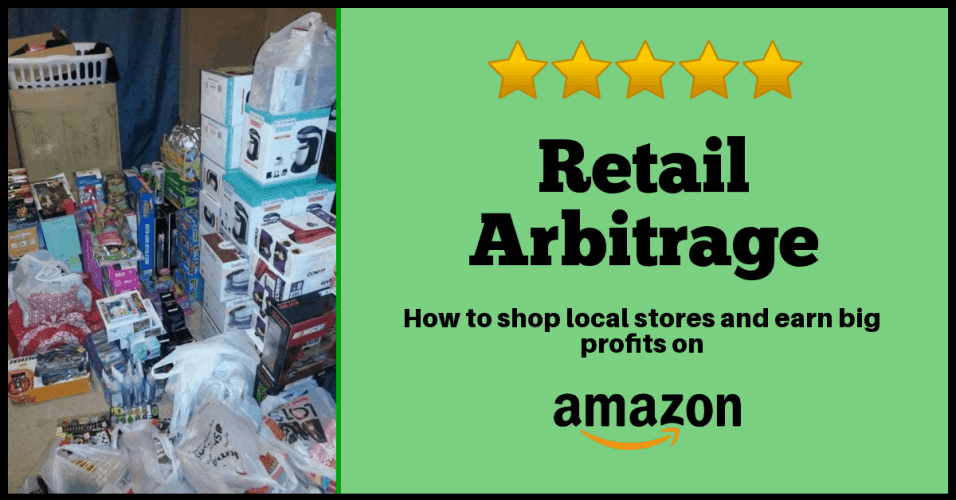
What is retail arbitrage?
Behind the complex phrase is a simple concept. A seller purchases products from a retail outlet at a discount, and sells these discounted products for a profit.
Let’s take the humble pen as an example. You walk into a Walmart store and notice that pens at the store are on sale. A $4 pen is being sold for $2. For smart retail arbitrage sellers, this is an opportunity. You buy 100 pens for this discounted rate and put up a listing on Amazon selling the same pen. The catch is that you’re selling it for $3.90. That gives you a healthy margin while still being cheaper than the retail price!
If you’re wondering whether you can still make a profit on your item, check out SellerApp’s FBA calculator. We recommend you buy products which can net you a profit of at least $3.
So, what’s the difference between retail arbitrage and normal retailing? When it comes to retail arbitrage there are no suppliers or manufacturers involved. You are buying directly from a retail store or market. This can cut into your profit margin, but is often easier than finding, and sourcing products through a supplier.
The lower cost of entry makes retail arbitrage the perfect way to start your seller journey on Amazon.
Why does retail arbitrage work?
You’re probably reading this and wondering why people would even buy products sold for a higher price. Can’t they just go to Walmart and buy the same pen for $2 instead of paying you $3.90? The answer lies in simple economics.
- Products don’t cost the same everywhere.
The pen you’re buying for $2 in city A might cost $5 in city B. Products that are slow-moving or common in a particular area can be in high demand in another area. Sellers can use this to their advantage to turn a profit.
- Convenience
Consumers are willing to pay for convenience. E-commerce giants like Amazon have redefined the shopping experience for many people across the world. When a customer purchases a product online, they are willing to pay extra to avoid the hassle of going to a Walmart or standing in long lines. With services like Prime, customers don’t need to wait for their purchases either!\
The Benefits of Retail Arbitrage
In general, retail arbitrage offers a quicker, simpler, and lower-risk option for setting up your third-party seller business on Amazon, compared to launching your business with a private label product. Because you are selling products from established and known brands, you don’t have to put as much time and money into convincing potential customers that they want what you are selling. It can also be much quicker to get your business up and running, since as soon as you purchase inventory you can send it in to Amazon and start selling it. Compare this with the much longer ramp-up times that come with selling a private label product. Almost every initial step with establishing a private label product can take a good deal of time to complete, from product research, to finding a manufacturer, to logo and packaging design, to product manufacturing, and then shipping from wherever the factory is located. Even with the best case scenario and quickest possible turnaround, selling a private label product means you won’t start making money nearly as quickly as you could with retail arbitrage. So while a private label product typically has much greater profit potential, retail arbitrage can be a good way to learn the Amazon platform and start making money right away.
Another perk of retail arbitrage is that you can establish your business on almost any budget. While having larger inventory volumes with Amazon can give you advantages in winning the buy box, as long as the products you purchase to resell have significant profit margin potential you can get your business going, even with minimal upfront investments.
The Risks of Retail Arbitrage
Any third-party seller who uses retail arbitrage knows that there are some risks and challenges that come along with the business model. The biggest overall risk is that your business can only be as successful as your ability to acquire inventory to resell. You are always limited by whatever inventory and deals are available to you for initial purchase.
Amazon is also making it harder to find products that qualify for resale on their platform. Many brands are now “gated,” meaning that a third-party seller must obtain approval and/or pay a fee to sell a product from that brand. Also, large retailers are placing limits on the number of units a single customer can purchase, making it much harder to acquire the kind of quantity that you would need to make it worthwhile to resell on Amazon.
There is also a pretty significant time investment that comes along with retail arbitrage, since it can take some serious hunting to track down great deals. Either you are visiting tons of local stores in your area, or you are scouring the internet for deals, but either way you go about it, time is a big factor.
Approaches to Finding Inventory
When it comes to finding inventory that works for retail arbitrage, you have two basic options — you can search the local stores where you live to find great deals, or you can spend time hunting down deals online.
There are pros and cons to both approaches. Searching local stores might take a bit more time, since it means physically leaving your home and visually scanning the shelves of the store. But, some great deals can be found this way since with this approach you have the benefit of a hyper-local market. The smaller and more local the business, the greater the potential to find some really great deals that you can resell at a huge profit online. Larger nation-wide chains do sometimes offer reduced prices that are specific to a certain location, however the bigger the store the less likely this will happen. Also, large chains can at times have a limit on the number of units a single customer can purchase for sale items, which is something you’ll rarely if ever encounter in a small locally-owned business.
Searching online for inventory to resell is certainly more convenient since it can be done from the comfort of your home and doesn’t require taking the time to travel to a store or visually scan the aisles for deals. But keep in mind that with the online approach you lose the benefit of hyper-local pricing, and you are also likely to encounter limits on the number of items you can purchase, particularly from larger online stores.


